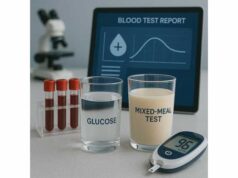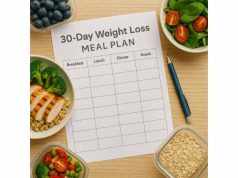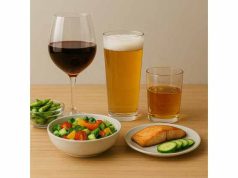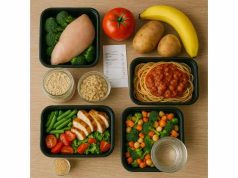
A ketogenic diet promises fast fat loss by pushing your body into ketosis, a state where you burn fat for fuel. That promise is appealing—but keto is not magic, and it is not right for everyone. This guide explains how keto works, when it helps, and how to set macros that protect muscle and satiety. You will also learn who should avoid keto and how to troubleshoot plateaus. If you want a broader foundation on calorie targets and food planning before you commit, see our concise calories, macros and meal planning guide. Read on for a clear, practical overview grounded in physiology and real-world adherence.
Table of Contents
- What is the ketogenic diet?
- Does keto work for weight loss?
- Keto macros and calories
- How to start keto safely
- Keto mistakes and plateaus
- Risks and who should avoid keto
- Long-term keto and maintenance
- Frequently Asked Questions
What is the ketogenic diet?
At its core, a ketogenic diet is very low in carbohydrate, moderate in protein, and higher in fat. By limiting carbs enough—usually to about 20–50 grams of “net carbs” per day—you reduce glucose availability, insulin levels fall, and the liver increases production of ketones from fatty acids. These ketones (acetoacetate, β-hydroxybutyrate, and acetone) can fuel the brain and many tissues, while your body draws more energy from stored fat.
Keto vs. “low carb.” Low-carb diets vary widely (50–150 grams of carbs per day) and do not always produce ketosis. Ketogenic diets target ketosis on purpose by restricting carbohydrate more tightly and keeping protein moderate. Very high protein without enough fat can suppress ketone production for some people, which is why “moderate protein” is part of standard keto guidance.
Net carbs explained. Net carbs are total carbohydrates minus fiber and sugar alcohols that are minimally absorbed. Most people track net carbs to leave room for vegetables, nuts, and seeds. For example, a cup of broccoli has about 6 grams of carbs, 2.5 grams of fiber, and roughly 3.5 grams of net carbs.
What you actually eat. A typical keto plate emphasizes:
- Protein: eggs, poultry, fish, lean red meat, Greek yogurt, tofu, tempeh.
- Fats: olive oil, avocado, nuts, seeds, olives.
- Non-starchy vegetables: leafy greens, crucifers, zucchini, peppers, mushrooms.
- Limited dairy: cheese, cottage cheese, plain yogurt (check carbs).
- Beverages: water, coffee, tea (unsweetened).
Foods commonly limited or avoided include bread, pasta, rice, most grains, starchy vegetables, most fruits, and sugary beverages. Many people experiment with lower-carb fruit like berries in small portions.
Keto is a tool, not a rule. The mechanism—lower insulin, higher satiety for many, less food variety—can make staying in a calorie deficit easier. But keto still works through energy balance; it does not bypass the basic need to consume fewer calories than you burn. If you prefer a broader approach, our overview of healthy weight loss basics shows how keto fits alongside other sustainable methods.
Who gravitates to keto. People who enjoy savory foods, like structured rules, or struggle with appetite on low-fat diets often find keto appealing. Others prefer flexibility and a wider range of carbs. Both paths can work; choose based on preference, health status, and adherence—not hype.
Does keto work for weight loss?
Short answer: yes, keto can drive weight loss—mainly by helping some people control appetite and stick to a calorie deficit. In the first week or two, rapid loss often reflects water and glycogen depletion; true fat loss follows with continued adherence.
Why keto may help:
- Appetite control. Lower carbohydrate intake and steady blood sugar can reduce hunger for many. Higher protein and fat increase meal satisfaction, slowing digestion and curbing snacking.
- Food environment. By removing many hyper-palatable, easy-to-overeat foods (sweets, chips, refined grains), keto simplifies choices and lowers passive calorie intake.
- Glycemic and insulin effects. Lower insulin over the day favors fat mobilization. That biochemical nudge can make a deficit feel easier, even if the total daily energy balance still rules outcomes.
What the bigger picture shows. When calories and protein are matched, low-carb and low-fat diets produce similar fat loss over months. The winner is rarely the macro split; it is the plan you can follow. If comparing approaches, see our overview of low carb compared with low fat to understand which aligns better with your habits.
Body composition matters. Keto can preserve lean mass when protein is adequate. However, under-eating protein or total calories will still cost muscle. For active people and lifters, pairing keto with resistance training and sufficient protein is essential.
Energy, training, and adaptation. During the first 2–4 weeks, some feel sluggish, especially with high-intensity workouts that rely on glycogen. Many adapt and perform well for moderate-intensity efforts. Sprinters, CrossFit athletes, or those with frequent intervals may prefer targeted or cyclical carbs around sessions—or a higher-carb plan entirely.
Who tends to lose well on keto. If you binge on sweets, feel hungry on low-fat diets, or enjoy eggs, fish, salads, and olive oil, keto may fit. If you love bread, fruit, oats, and rice, and you lift heavy or do intervals often, another approach may be more enjoyable—and equally effective.
Bottom line. Keto works when it helps you eat fewer calories without constant hunger, meet protein needs, and move more. It fails when it becomes a high-fat, low-protein excuse to overeat calorie-dense foods.
Keto macros and calories
Your calorie target sets the pace of weight loss; your macro split shapes hunger, performance, and lean-mass retention. Think of calories as the budget and macros as how you spend it.
Step 1: Set calories. A practical starting range for a moderate deficit is about 300–600 calories below maintenance for most adults. Larger bodies or those with more to lose may use a slightly bigger initial deficit; smaller, leaner, or very active people should aim toward the lower end to protect training and adherence.
Step 2: Set protein (first). On keto, prioritize protein before carbs and fats:
- Aim for 1.6–2.2 grams per kilogram of body weight (about 0.7–1.0 g per pound).
- If you have high body fat, base protein on goal weight or lean mass to avoid overshooting.
- Example: A 70-kg person targets 112–154 g protein per day.
Protein keeps you full, maintains muscle, and supports recovery. If you struggle to hit your number, anchor each meal around a clear protein source.
Step 3: Set carbs (for ketosis). Most adults maintain ketosis between 20–50 g net carbs/day. Smaller, less active people often need the lower end; taller or more active people sometimes tolerate the higher end while staying in ketosis. Track net carbs initially to learn your personal threshold.
Step 4: Fill remaining calories with fat. After protein and carbs are set, fat fills the rest of your calorie budget. To estimate:
- Convert protein grams × 4 kcal/g; carbs × 4 kcal/g; fat × 9 kcal/g.
- Subtract protein and carb calories from your daily target.
- Divide the remainder by 9 to get grams of fat.
Worked example. Suppose you aim for 1,800 kcal with 130 g protein and 30 g net carbs.
- Protein calories: 130 × 4 = 520 kcal
- Carb calories: 30 × 4 = 120 kcal
- Remaining for fat: 1,800 − 640 = 1,160 kcal
- Fat grams: 1,160 ÷ 9 ≈ 129 g fat
That yields ~130 g protein, 30 g net carbs, and ~129 g fat. Adjust by feel: if you are hungry, nudge protein up; if weight loss stalls and hunger is manageable, shave calories from fat first.
Electrolytes and fiber. Early on, low insulin increases sodium and water losses. Include 2–3 cups of broth or add salt to meals, and target 25–35 g fiber from non-starchy vegetables, nuts, seeds, and small portions of berries. Psyllium or ground flax can help on tough days.
Macro flexibility. You do not need perfect numbers daily. Hit your protein, keep net carbs in range, and let fat move with appetite and activity. For a deeper dive into setting macros across diet styles, see our guide to macro ratios for fat loss.
How to start keto safely
A smooth start minimizes side effects and sets up sustainable habits. Use this simple, two-week plan.
Week 1: Build the plate and the pantry.
- Plan protein first. Choose 2–3 go-to options for each meal (e.g., eggs or Greek yogurt for breakfast; chicken, tuna, or tofu for lunch; salmon, turkey, or lean beef for dinner). Clarify your protein grams per day using this overview: protein grams per day.
- Load non-starchy vegetables. Buy salad greens, cucumbers, peppers, mushrooms, zucchini, broccoli, and cauliflower. Aim for 2–4 cups daily.
- Pick fats you enjoy. Olive oil, avocado, olives, nuts, and seeds. Keep portions intentional; fats are calorie dense.
- Sodium and hydration. Sip water across the day and salt food to taste; add broth if you feel lightheaded.
- Clear clutter foods. Move sugary snacks, chips, and white breads out of sight (or out of the house) to reduce friction.
Week 2: Dial in tracking and rhythm.
- Track net carbs for 7–10 days to learn triggers and tolerance.
- Keep a meal rhythm (e.g., 3 meals, 1 snack) to reduce grazing.
- Lift 2–3 times per week. Resistance training preserves muscle and helps appetite control.
- Sleep 7–9 hours. Poor sleep increases cravings and slows progress.
- Expect an adaptation dip. The first 5–10 days can feel flat; electrolytes, steady protein, and light movement help.
Smart swaps that keep variety.
- Replace tortillas with lettuce wraps or low-carb wraps if they fit your net-carb target.
- Use cauliflower rice or spiralized zucchini instead of pasta or grains.
- Choose berries with cream or yogurt for dessert.
When to adjust. If you feel persistently drained after two weeks, consider raising carbs toward 40–50 g net, timing a small portion around workouts, or trying a higher-carb plan that keeps protein high and calories in check.
Keto mistakes and plateaus
Keto can stall for familiar reasons. Here is how to spot and fix the big ones.
1) Undereating protein. Keto is not “all fat.” Too little protein leads to hunger, muscle loss, and slower metabolism. Anchor every meal with 25–45 grams of protein, depending on your size and goals.
2) Overeating fat. “Fat to satiety” works only if you stop when you are satisfied. Nuts, cheese, oils, and keto treats are easy to over-pour. Use measured portions for calorie-dense foods and fill volume with vegetables.
3) Net-carb blind spots. Keto bars, sugar alcohols, and “keto-friendly” desserts can add up. If weight loss stalls, cap these items and emphasize whole foods.
4) Low electrolytes. Headaches, cramps, and fatigue often reflect sodium, potassium, or magnesium gaps—especially early on. Salt food, include broth, eat potassium-rich low-carb vegetables, and consider a magnesium supplement if your doctor agrees.
5) Inconsistent tracking. You do not have to track forever, but a 7–10 day audit can reveal hidden calories. Measure oils, logging “just a splash” accurately for a week.
6) Cardio only, no lifting. Resistance training preserves muscle and sharpens body composition. Two to three full-body sessions weekly are enough for most people.
7) All-or-nothing mindset. One higher-carb meal does not ruin progress. Return to your usual pattern next meal and keep your weekly calorie average in range. For broader troubleshooting beyond keto, review these common diet mistakes.
When a plateau is real. Scale weight can hold steady while fat loss continues if you gain muscle or retain water. If measurements, photos, and clothes do not change for 3–4 weeks, reduce calories by 5–10%—primarily from added fats—and keep protein stable.
Risks and who should avoid keto
Keto is safe for many adults, but not all. Understand the risks and contraindications before you start.
Medical conditions that need supervision or a different plan.
- Diabetes (especially type 1) or insulin/GLP-1 medications. Carbs and meds interact; your clinician must guide dose changes to prevent hypoglycemia.
- Kidney disease or history of kidney stones. Protein needs careful setting; hydration and citrate intake matter.
- Liver disease or pancreatitis. Fat handling and ketone metabolism can be impaired.
- Gallbladder removal or biliary issues. High fat may aggravate symptoms; you may need a slower ramp or different macro split.
- Pregnancy or breastfeeding. Ketones cross the placenta; higher-carb, nutrient-dense plans are typically recommended unless supervised by an experienced clinician.
- Eating disorders or a history of disordered eating. Restrictive rules may worsen symptoms; choose a flexible, supported approach.
Lipid changes. Many see neutral or improved triglycerides and HDL on keto. A subset experiences a marked LDL-cholesterol rise (“lean mass hyper-responder” pattern). If your LDL increases substantially, discuss options with your clinician: more unsaturated fats, slightly higher carbs, or a different plan.
Micronutrients and fiber. Poorly designed keto can shortchange fiber, potassium, magnesium, and certain B-vitamins. Emphasize non-starchy vegetables, nuts, seeds, and seafood; consider a multivitamin if advised. Hydration is also critical; review practical hydration strategies to reduce cramps and headaches.
Keto flu. Early fatigue, headache, irritability, and brain fog typically reflect sodium and water shifts. Salt your food, drink broth, and give your body 1–2 weeks to adapt.
Bottom line. If you have medical conditions, take medications that affect blood sugar or blood pressure, or have cardiovascular risk concerns, involve your healthcare provider before starting keto. Safety first, then macros.
Long-term keto and maintenance
Keto is a strategy—not an identity. After you reach a comfortable weight or if progress slows, consider how you want to eat for the next year, not just the next month.
Option 1: Stay keto with flexibility. Many maintain weight by relaxing to the higher end of net carbs (40–60 g) on training days, prioritizing whole foods and protein, and keeping fat intake intentional. This approach suits people who feel best in mild ketosis.
Option 2: Targeted or cyclical carbs. If you lift or do intervals, try targeted carbs (10–30 g net from fruit, yogurt, or a small grain portion) 30–60 minutes before tough sessions. Alternatively, a cyclical pattern (one moderately higher-carb evening once or twice per week) can refill glycogen while keeping weekly calories controlled.
Option 3: Transition to a higher-carb, high-protein plan. Some prefer more fruit, legumes, and intact grains once weight is off. Keep protein high, vegetables abundant, and total calories steady. Many thrive with 100–200 g carbs per day when paired with training.
Keep the habits that worked.
- Plan protein-anchored meals.
- Fill half your plate with vegetables.
- Measure fats and calorie-dense foods.
- Train consistently, sleep well, and manage stress.
How to reintroduce carbs without rebound.
- Add one new carb source at a time (e.g., oatmeal at breakfast), adjusting fat down to keep calories stable.
- Watch weekly averages, not single days.
- Keep protein constant to protect lean mass and appetite control.
There is no single “correct” endpoint. The right maintenance pattern is the one you can live with comfortably while protecting health markers and energy.
Frequently Asked Questions
How quickly will I lose weight on keto?
Most people drop water weight in the first week, then settle into a fat-loss pace of about 0.5–1.0% of body weight per week with a moderate calorie deficit. Progress varies with adherence, calories, protein intake, training, sleep, and stress. Track weekly averages rather than day-to-day changes.
Do I have to be in ketosis to lose fat?
No. Ketosis is one way to control appetite and reduce calories, not a requirement for fat loss. You can lose fat on higher-carb diets if protein is adequate and calories are controlled. Choose the approach that you can follow consistently without excessive hunger or fatigue.
What are the best foods for keto beginners?
Start with protein staples (eggs, chicken, fish, Greek yogurt, tofu), non-starchy vegetables (greens, broccoli, zucchini, peppers), and fats you enjoy (olive oil, avocado, nuts). Keep simple snacks like cheese sticks or almonds on hand and plan water or broth for electrolytes the first two weeks.
Can I build muscle on keto?
Yes, but it can be harder for high-intensity lifters. Prioritize protein (1.6–2.2 g/kg), perform progressive resistance training 2–4 times weekly, and consider targeted carbs before heavy sessions. If strength stalls after several weeks, raising carbs while keeping calories and protein steady often helps.
Is keto safe for people with high cholesterol?
It depends. Many see improved triglycerides and HDL, but some experience a significant LDL rise. Monitor your lipid panel. Emphasize unsaturated fats (olive oil, nuts, fish), keep saturated fat moderate, and discuss results with your clinician. If LDL climbs substantially, consider a different macro split.
Do I need supplements on keto?
Supplements are optional. Common helpful choices include electrolytes (sodium, magnesium, potassium) and, if diet is limited, omega-3s or a basic multivitamin. Creatine supports strength training on any diet. Always discuss supplements with your healthcare provider, especially if you take medications.
What breaks a keto plateau?
Audit calories and protein for 7–10 days, measure fats, cap keto treats, lift weights, sleep 7–9 hours, and walk daily. If progress still stalls for 3–4 weeks, reduce calories by 5–10% from fats while keeping protein steady. Consistency over weeks—not perfection in a day—breaks most plateaus.
References
- Low‐carbohydrate versus balanced‐carbohydrate diets for reducing weight and cardiovascular risk 2022 (Systematic Review)
- Systematic review and meta‐analysis of protein intake to support muscle mass and function in healthy adults 2022 (Systematic Review)
- Alternative Dietary Patterns for Americans: Low-Carbohydrate Diets 2021 (Review)
- Effects of Hypocaloric Low-Fat, Ketogenic, and Ketogenic and Ketone Supplement Diets on Aldosterone and Renin 2023 (RCT)
- Dramatic elevation of LDL cholesterol from ketogenic-dieting: A Case Series 2023 (Case Series)
Disclaimer
This information is educational and does not replace personalized medical advice. Always consult your healthcare provider before starting a ketogenic diet, changing medications, or beginning supplements—especially if you have diabetes, cardiovascular risk factors, kidney or liver disease, are pregnant or breastfeeding, or have a history of disordered eating.
Share and follow
If this guide helped you, consider sharing it with a friend who is weighing keto as an option. You are also welcome to follow us on the social network you use most—Facebook, X, or others—for new articles and practical tools.










